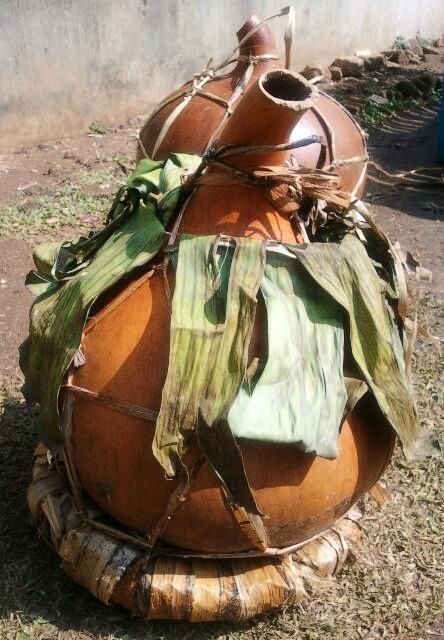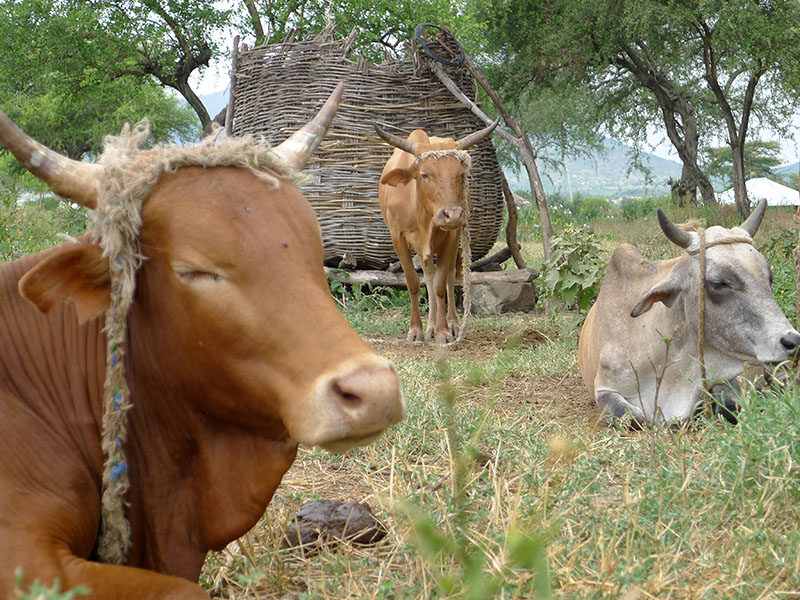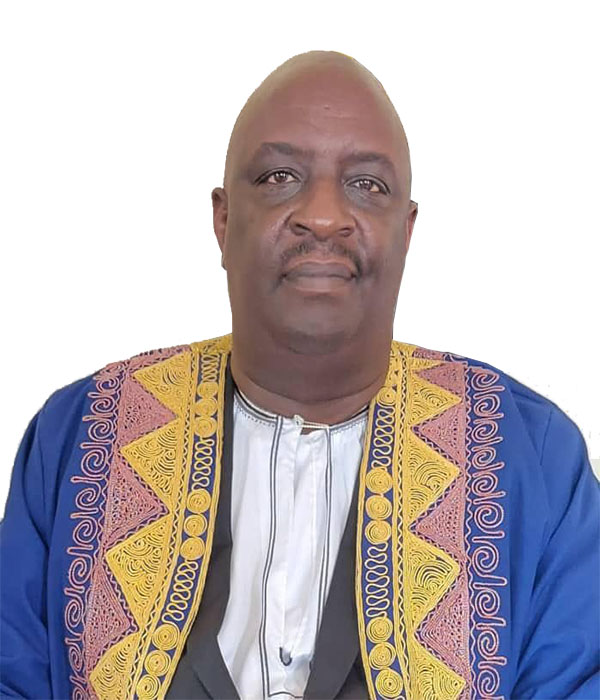In Bunyoro-Kitara tradition, western Uganda, marriage is a scared ritual. It is highly valued and given a lot of attention. In the past it was a protracted process involving the parents and elders. There were many attached traditions that had to be observed like checking the clan and lineages of the suitors which are very crucial.
Today, a few things have changed due western influence as well as modernity coupled with wide interactions among the young people.
Currently the man and woman may meet in wider encounters in school or at work and having gone through their own exchanges and agreed to a marriage relationship will seek first of all the parents approval and then go ahead to prepare for various ceremonies preceding the union. In Bunyoro-Kitara Culture, the traditional marriage (introduction) ceremony which involves the parents participation is still ultimate. Today, this is often also followed by a church or mosque wedding.
The Introduction Ceremony
An Introduction Ceremony in Bunyoro-Kitara culture, after a connection is established between the bride and groom to be; is preceded by a small group of the groom and his immediate family and friends visiting the home of the bride on a familiarisation tour. It is at this event that details of the Introduction Ceremony are agreed upon (Dowery for the Bride, dates of the Introduction, the delegation number, etc).
On the agreed upon Introduction day, a delegation (Usually composed of male parents, aunties, brothers and sisters, relatives, in-laws and close friends) from the groom’s family visit the bride’s home with an appointed spokesman (Usually an Elder with a good command of culture and Runyoro Dialect ) to represent them in various negotiations with the Brides family.
The groom’s family is welcomed by their hosts and ushered into the compound by Omuko (a brother, or a close male relation of the bride) from the bride’s family. On arrival, Enkoko yo’muko (A cock for the brother-in-law) is handed over to him, before he agrees to usher them in.

By the time of arrival of the Bride’s delegation, elders from the bride’s side are already seated in anticipation of the visit. Upon greeting the hosts and taking their seats (offered by the hosts’ chosen Elder), the guests are offered traditionally roasted coffee as a symbol of formally establishing friendship between the two clans / families (kunywanisa Enganda).
After settling in, the elder from the groom’s side is asked by the host elder to introduce the purpose of the visit. The visiting elder, after introducing himself in a polite manner, mentions having come on this visit to seek a hand in marriage for his son; the groom (in runyoro that is to say; ‘Twizire Kuzaarwa omuka enu’) literally meaning, we have come to be born into this home. This in Bunyoro-Kitara tradition means that the visiting delegation has found someone of interest in the host family.
After this declaration, there is a prolonged discussion, involving both elders on either side, sometimes attracting argument, all done in a dignified and civilised manner, supporting their discussion with local proverbs, and parables.
(In the olden days, all did not always end well for the visiting team. If some youthful young men within the host community did not welcome the idea of one of their potential brides being taken by outsiders, this would sometimes end in fierce fighting, hence able bodied men and a youthful delegation was always preferred incase of encounter of such resistance)
But today, this process is mostly peaceful and the guests are treated with dignity. After the name of the bride in question is pronounced, the bride’s family might joking deny knowledge of the Bride saying it might be a mistake of identity or a lost delegation. At this point, the groom’s spokesman will not relent on his effort to accept their response but insist that it is the name of the bride. The Muko is delegated the duty to the search for the bride and present her to the visitors for confirmation.
After a group of girls, and or ladies from the host family is brought to greet the visitors. The Muko will return with the bride, in the company of her paternal Aunt (who first interfaces with the groom before the introduction visit (Isenkati wensonga)), her sisters and friends, all dressed in beautiful traditional wears. They are ushered to the audience by traditional music and dances to highlight celebration and jubilation. This erupts much excitement and applause from both the host and guest congregations.
The groom, in company of his Bestman is tasked to identify his bride from among the group, by putting a traditionally made necklace on her (Kugweka Orukwanzi) amidst ululations and celebrations from the groom’s entourage.
The bride after being asked a few confirmatory questions by the host elders on the union, is tasked to put a symbol of identification on the groom (often a decorative flower), and to be welcomed by the community.
At this point, the groom’s side is required to present the gifts brought for the bride’s family (Among these, and depending on different circumstances of the union of the bride and groom by the time of this event are; Ekichwa Mukaaga, Akasiimo K’Omugurusi, Embuzi ya’Nyina Mwaana, Embuzi ya’Nyinenkuru Mwana, Embuzi ya’Isenkati Mwana, Embuzi y’Aboruganda (if the Bride is a Mubiitokati, this is Ente y’Aboruganda (gyeete Kyahenda), Amaarwa g’Aboruganda (local brew) Blanket ya’Isenkuru mwaana, among other gifts as agreed upon and drought by the groom).

After the groom’s team Elder has presented the gifts brought, the bride is asked one more time by her family elder whether she is fully committed to this union, a question whose answer is often in affirmative. The elder from the bride’s family then goes ahead to officially receive the presented gifts on behalf of the brides family.
At this point, the groom is called upon to put an identification of the bride, which is often an engagement ring as a sign of union amongst them and engagement.
At this point, the groom is formally accepted as a son-in-law (he has become Omwana omumaka) by an announcement from the Elder on the bride’s side.
A meal is then served to the visitors. Traditionally, the groom and some elders (all together, 9 people) – Omwenda Ogwenda Abantu are ushered into, and served in the house, with the groom being served a special meal by his bride assisted by her sisters or aunt (Isenkati)

Thereafter, the elder on the groom’s side will introduce members in his entourage, and also get introductions from the elder of the people from the Bride’s family.
According to the Bunyoro-Kitara tradition, the mother of the groom does not accompany the son for the introduction ceremony.
The Elder from the groom’s side will express thanks and gratitude for being hosted, and request to leave, which is always granted by the elder from the Bride’s family.
The bride’s family might also have some gifts for the groom’s team to carry back for his people who did not attend the function.
The departure of the groom’s visiting team always marks the end of an introduction ceremony, followed by singing and dancing at by the brides relatives in celebration of their daughter finding a suitor, and getting married.



